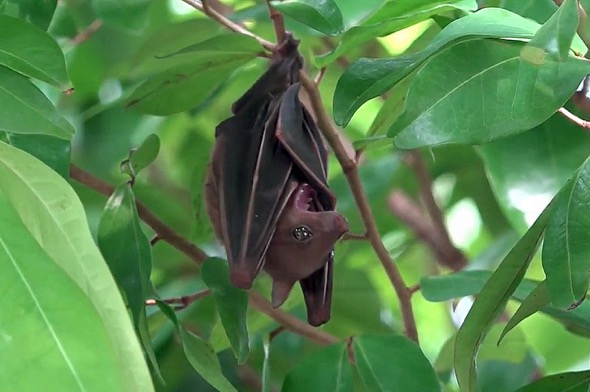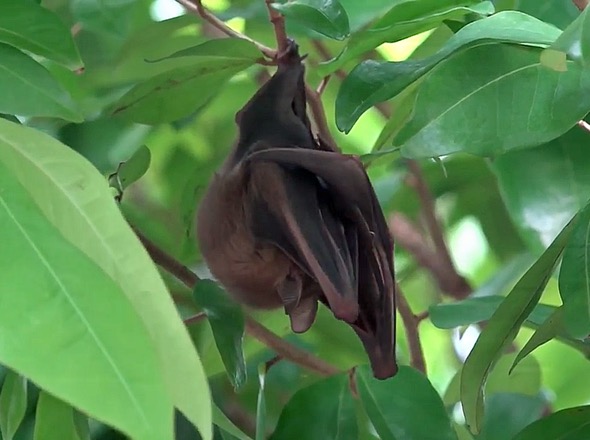
This juvenile Common Fruit Bat (Cynopterus brachyotis) arrived one morning to roost under my porch but was discouraged from doing so by a bag of dried red chillies (Capsicum annuum) LINK. It immediately flew to a nearby Nam Nam tree (Cynometra cauliflora) where it roosted until after dusk.

During the evening it was lightly preening itself but when it was dark the preening was vigorous. No doubt it was preparing itself for a night of foraging.
By around 1930 hours it suddenly left its perch to move down the branches before flying off. I was expecting it to launch off from its perch but missed the video moment when it moved down from where it was hanging.
YC Wee
10th May 2017








